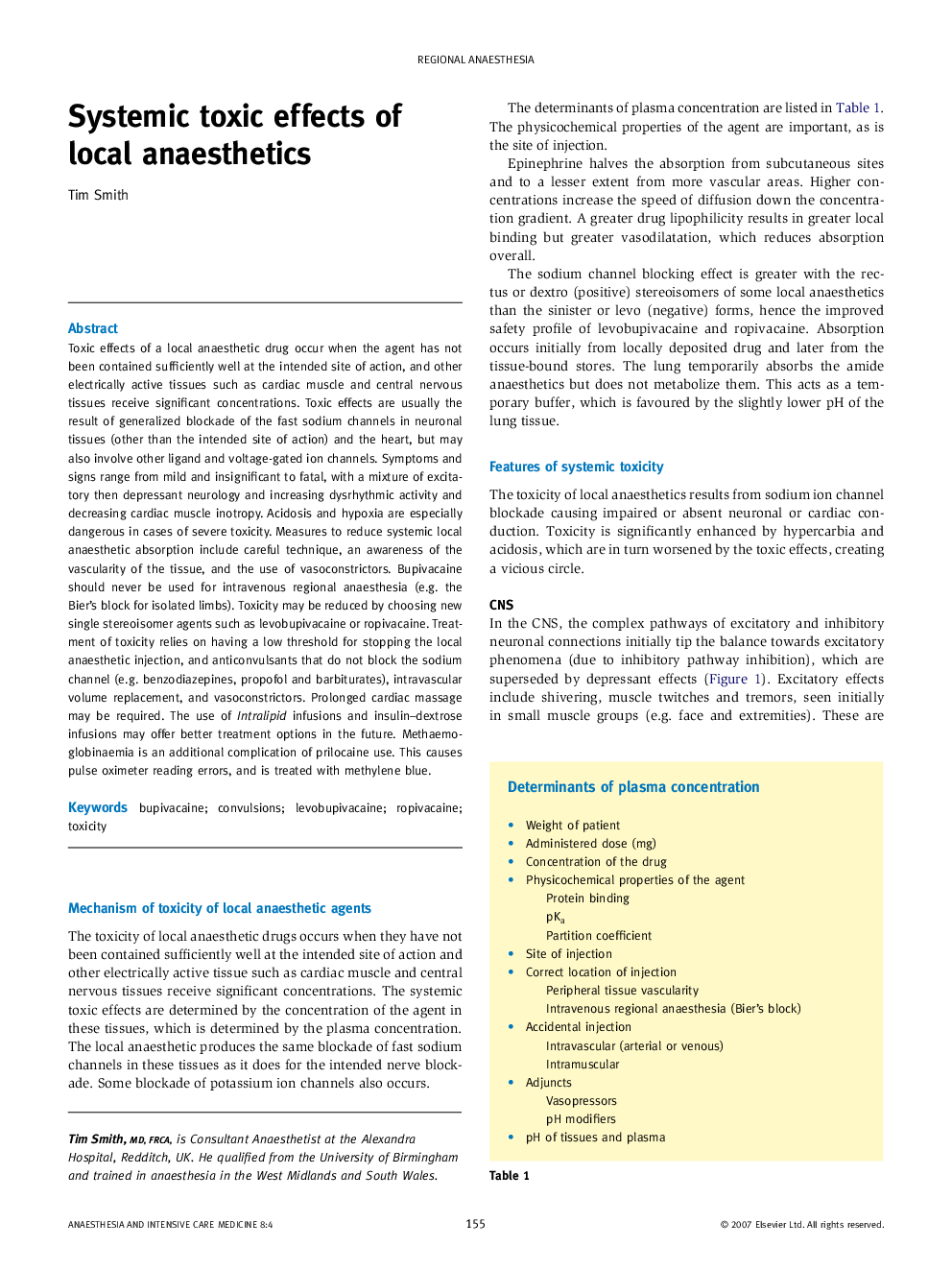| Article ID | Journal | Published Year | Pages | File Type |
|---|---|---|---|---|
| 2743217 | Anaesthesia & Intensive Care Medicine | 2007 | 4 Pages |
Toxic effects of a local anaesthetic drug occur when the agent has not been contained sufficiently well at the intended site of action, and other electrically active tissues such as cardiac muscle and central nervous tissues receive significant concentrations. Toxic effects are usually the result of generalized blockade of the fast sodium channels in neuronal tissues (other than the intended site of action) and the heart, but may also involve other ligand and voltage-gated ion channels. Symptoms and signs range from mild and insignificant to fatal, with a mixture of excitatory then depressant neurology and increasing dysrhythmic activity and decreasing cardiac muscle inotropy. Acidosis and hypoxia are especially dangerous in cases of severe toxicity. Measures to reduce systemic local anaesthetic absorption include careful technique, an awareness of the vascularity of the tissue, and the use of vasoconstrictors. Bupivacaine should never be used for intravenous regional anaesthesia (e.g. the Bier’s block for isolated limbs). Toxicity may be reduced by choosing new single stereoisomer agents such as levobupivacaine or ropivacaine. Treatment of toxicity relies on having a low threshold for stopping the local anaesthetic injection, and anticonvulsants that do not block the sodium channel (e.g. benzodiazepines, propofol and barbiturates), intravascular volume replacement, and vasoconstrictors. Prolonged cardiac massage may be required. The use of Intralipid infusions and insulin–dextrose infusions may offer better treatment options in the future. Methaemoglobinaemia is an additional complication of prilocaine use. This causes pulse oximeter reading errors, and is treated with methylene blue.
